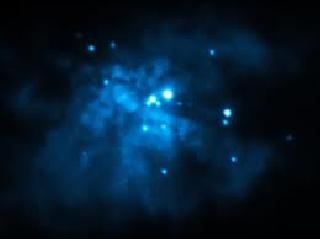
WASHINGTON (PTI): Astronomers have spotted two super-massive black holes circling each other like dance partners at the heart of a remote galaxy, 3.8 billion light-years from Earth.
The incredibly rare sighting was made with the help of NASA's Wide-field Infrared Survey Explorer, or WISE.
Follow-up observations with the Australian Telescope Compact Array near Narrabri, Australia, and the Gemini South telescope in Chile, revealed unusual features in the galaxy, including a lumpy jet thought to be the result of one black hole causing the jet of the other to sway.
"We think the jet of one black hole is being wiggled by the other, like a dance with ribbons," said Chao-Wei Tsai of NASA's Jet Propulsion Laboratory, California, who is lead author of a paper.
"If so, it is likely the two black holes are fairly close and gravitationally entwined," said Tsai.
The findings could teach astronomers more about how super-massive black holes grow by merging with each other.
Astronomers sifted through images of millions of actively feeding super-massive black holes spread throughout our sky before an oddball, also known as WISE J233237.05-505643.5, jumped out.
"At first we thought this galaxy's unusual properties seen by WISE might mean it was forming new stars at a furious rate," said Peter Eisenhardt, WISE project manager at NASA's Jet Propulsion Laboratory, and a co-author of the study.
"But on closer inspection, it looks more like the death spiral of merging giant black holes," said Eisenhardt.
It is the close-knit black holes, also called black hole binaries that have been the hardest to find for astronomers.
The objects are usually too small to be resolved even by powerful telescopes. Only a few strong candidates have been identified to date, all relatively nearby.
The new WISE J233237.05-505643.5 is a new candidate, and located much farther away, at 3.8 billion light-years from Earth.
Radio images with the Australian Telescope Compact Array were key to identifying the dual nature of WISE J233237.05-505643.5.
Super-massive black holes at the cores of galaxies typically shoot out pencil-straight jets, but, in this case, the jet showed a zigzag pattern.
According to the scientists, a second massive black hole could, in essence, be pushing its weight around to change the shape of the other black hole's jet.
Visible-light spectral data from the Gemini South telescope in Chile showed similar signs of abnormalities, thought to be the result of one black hole causing disk material surrounding the other black hole to clump.
Together, these and other signs point to what is probably a fairly close-knit set of circling black holes, though the scientists are not sure how much distance separate them.
The findings appear in the journal Astrophysical Journal.
 Previous Article
Previous Article Next Article
Next Article












The Indian Air Force, in its flight trials evaluation report submitted before the Defence Ministry l..
view articleAn insight into the Medium Multi-Role Combat Aircraft competition...
view articleSky enthusiasts can now spot the International Space Station (ISS) commanded by Indian-American astr..
view article